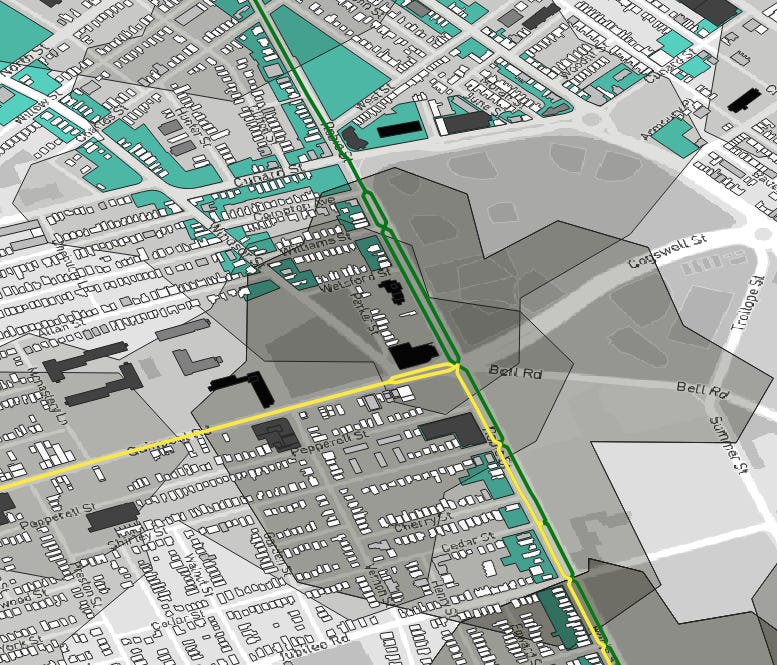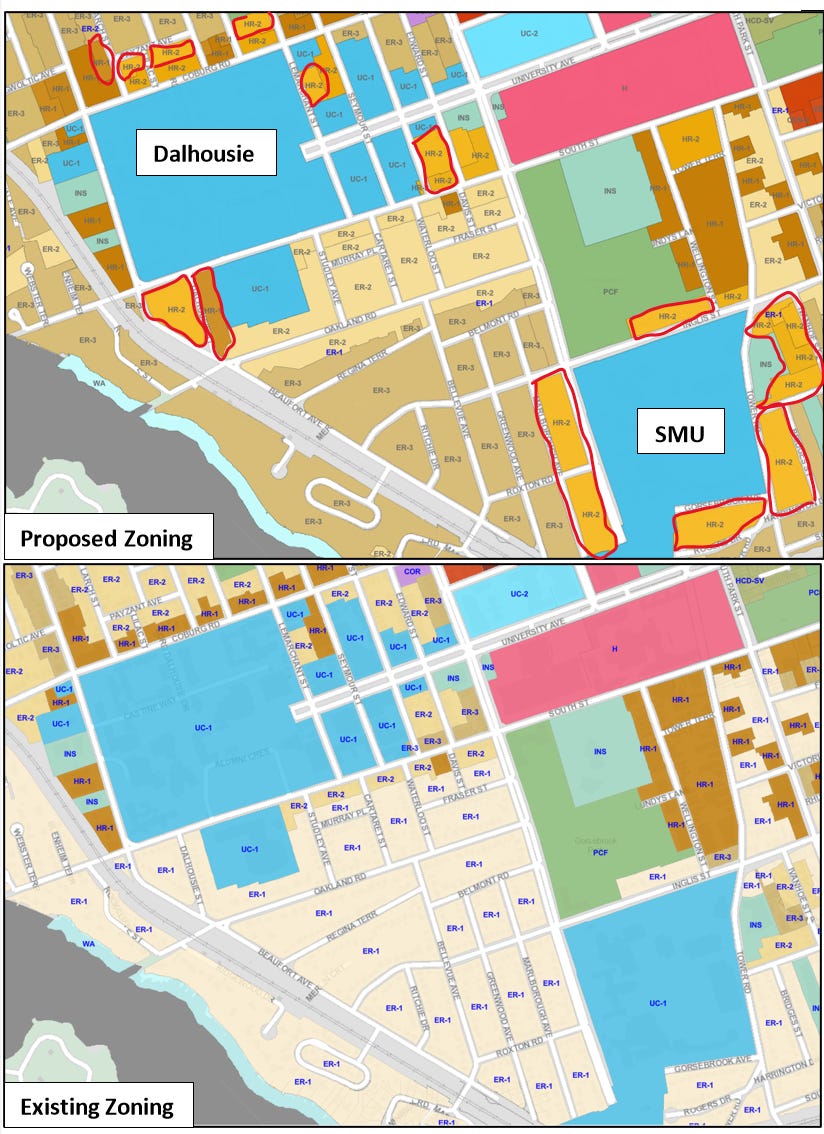Not HAF Bad: Halifax's Proposed Zoning Reforms
City proposes narrow but impressive up-zonings
Last fall, Halifax agreed to a series of changes as part of the federal Housing Accelerator Fund program. Most of the debate and attention surrounded the 4-units by-right demand coming from the feds. But the city also agreed to take up zoning changes to “allow for more density across the city”. This week we learnt what that means to HRM planning staff.
Transit Oriented Development
HRM has helpfully categorized the changes. First, let’s focus on “Enable More Transit Oriented Development”.
The changes add more density to Centre Plan areas (already the city’s densest, even if it’s small areas). But I want to focus on the Corridor (COR) changes.
First - the good: the Corridor zone will allow for much larger buildings. Today, the COR zone is flexible in what it can hold (businesses and homes), but generally quite small. Official graphics show a COR example as hardly taller than single family homes.
The expanded COR zone has gotten a significant bump in allowed height, about 2-3 more storeys. Close to home, that will mean 9-storey buildings along Robie near the Commons. I think that’s great. All in all turning a 3-6 storey zone into a 7-9 storey zone is good.
The bad part of the COR zone change is that the COR zone is an incredibly limited zone! Across the Regional Centre (the peninsula + Dartmouth within the circ highway), only 6% of the land is zoned as COR.
The draft plans do not expand the COR zone geographically. Aside from some tweaks, only one new strip of COR zoning has been added, along Windmill road in Dartmouth. The result is that Halifax is saying it will expand transit oriented development, but only in very skinny areas1.
This is a limited up-zoning. And we have a benchmark to compare to in B.C.’s transit oriented development plan. In that plan, 6 storeys will be allowed by right within 400m, and 10 storeys within 200 (i.e. roughly comparable heights to the new COR zone). But if you overlay the 400m walking distances from Halifax’s future Bus Rapid Transit stations, you can see a B.C.-type plan would cover many more areas. And this is using “walksheds” that city staff themselves created.
Rather than a true TOD plan, the city is adding more density to major streets and calling it Transit Oriented Development. Some COR zones are nowhere near a rapid bus stop, and many rapid bus stops have no COR zones nearby.
To pick one example, the intersection of Connaught and Bayers road will have two BRT lines meet - some of the best transit access in the city. Under a TOD approach, hundreds of single family homes could be replaced with 6+ storey apartments.
But the draft plan from city staff only has COR zones immediately around the intersection.
Another example. Nearly the entire area around the Commons is within a walkshed, but only the lots directly on major streets are covered by COR zoning.
There is nothing meaningfully different between living on Cunard and living a block away on Compton from a transit perspective, but the allowed density will now be radically different. But, in HRM’s defense, they did not explicitly agree to a transit oriented housing plan. They did however, explicitly agree to more housing near the universities…
More Housing Near Universities
I started writing this section with a critical tone2. But I changed my mind once I started circling the zoning changes below. There are quite a few, especially around SMU.
There are many ER-1 and ER-2 (single family / duplex lots) that will now be HR-2 (apartments). The HR-1/HR-2 upzonings are still narrowly targeted (avoiding much of the area between Dal and SMU). I don’t know if the quantity of up-zoning will meet the challenge, but clearly the style of change is exactly right.
We will now be able to replace single family homes within football’s throw of SMU with 9-storey apartments. This is exactly the leap we need to make to overcome a seemingly insurmountable housing shortage, and it’s exactly where we need it.
It might not be enough, but it’s well worth celebrating and supporting. Kudos to the city and staff.
Public feedback is available until February 16th at haf@halifax.ca, with council deliberations to follow.
Yes, four units will be allowed everywhere
I also lost a version of this re-write due to a Substack syncing error. Grrr.













Deny,
Somebody is listening at city hall